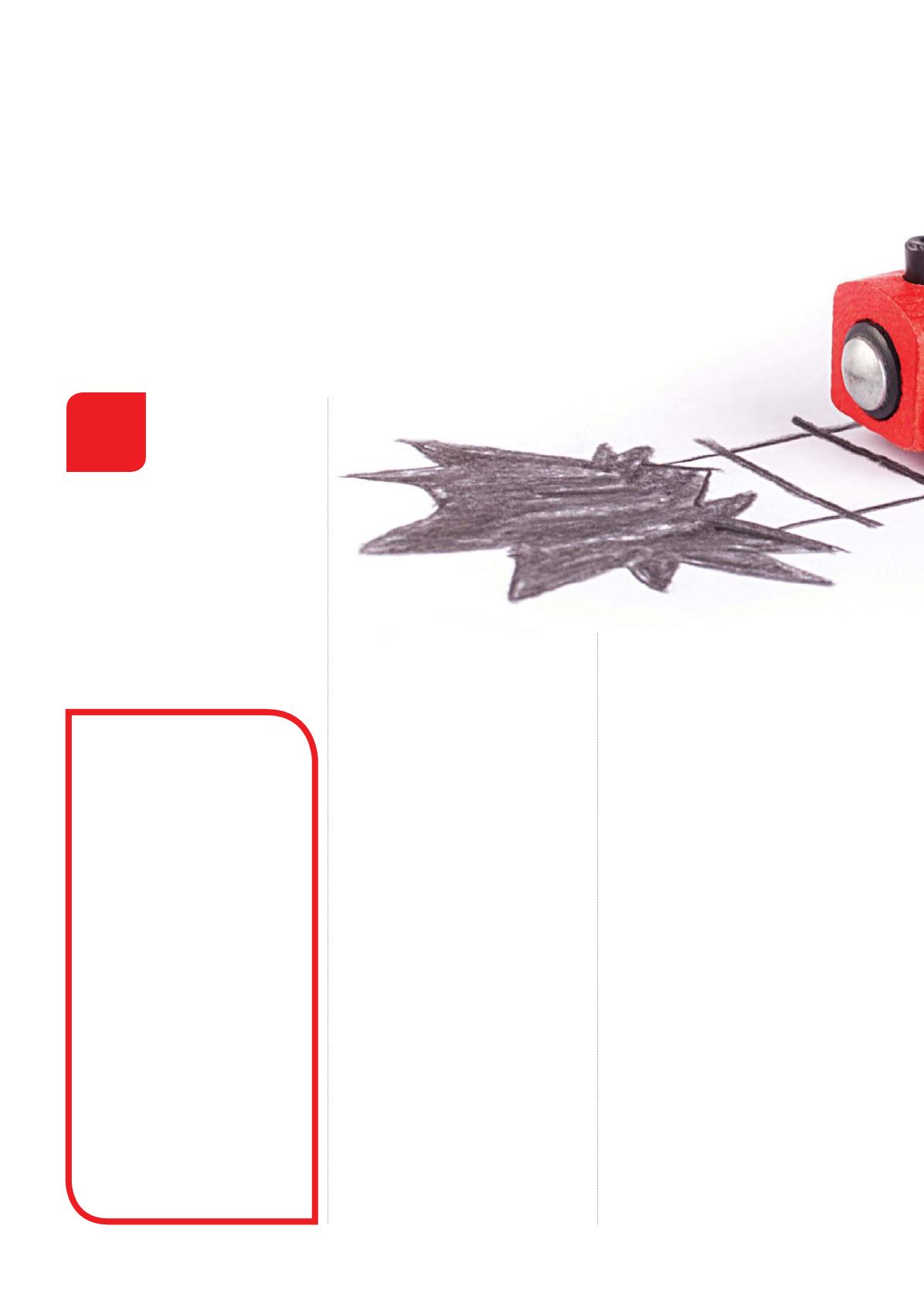
84
earlyyears.teachwire.net
Protecting children from harm is every nursery’s most vital duty,
so you need to get health and safety right.
Laura West
offers her
advice on ensuring your team’s practice is up to scratch...
here are many areas to
think about when focusing
on health and safety in
your setting. These include
a range of potential
hazards inside and out that must be kept
in mind. While not an exhaustive list, the
following highlights some of the most
commonly encountered issues...
HAZARDS INDOORS
Food
– specifically cross
contamination and allergies. Most
nurseries have good procedures for the
preparation of food and feeding children
at mealtimes, but cross contamination is
a big risk that people often forget. It can
How safe is
your setting?
be overcome by making
sure all children are cleaned after
mealtimes, removing clothing that
is particle covered, and prompt
housekeeping, including wiping
tables, chairs, placements and in
particular floors.
Fire
– blocked fire exits and escape
routes are a hazard we come across a
lot, with the culprits often pushchairs,
beds or large toys/activities. Make sure
all your fire exits and routes are clearly
marked, and that staff and parents are
aware of them. Fire-fighting equipment
should always be readily available –
sometimes we see extinguishers
used as coat pegs or door wedges, or
hidden behind furniture! Staff training
and education is the only way to
overcome this.
Trapped fingers
– most
nurseries use finger guards but if they
are not in a good state of repair, they
might as well not be used. Have a daily
inspection of guards: simply run your
hands up and down to make sure they
are safe and fit for purpose.
Electrical wires/cords
– having a computer or light table in
your nursery offers massive educational
benefits, but it also carries its own risk in
the form of possible strangulation from
wires. Make sure where possible that all
wires are out of reach and out of sight of
CHECK
YOUR
PRACTICE
T
children. If they can be attached to the
wall safely or in wire tidies, this should
control the risk. Make sure temporary
pieces of equipment are placed out of
reach after use.
Blind cords
– one of the biggest
strangulation risks we see. Cords should
be of the safety variety, which will snap
open when pressure is applied, and
must be out of reach of the children.
Where possible, use a cleat used to
secure the cords.
Medicines
– generally speaking
nurseries are good at making sure
children with long-term medical
conditions have medication on site.
However, this medication needs to have
its expiry dates logged and managed.
We regularly see inhalers, auto-injectors
and bottled medicines that are past
their expiration date, and therefore not
effective should they be required.
HAZARDS
OUTDOORS
Sandpits
– they’re great fun and
children love to play in them, but beware,
so does your local wildlife, e.g. foxes
and cats, who may use them as a giant
litter box. A well-fitted cover that goes
on when the sandpit is not in use by the
children will reduce this risk.
NURSERIES NEED TO
GUARD AGAINST THESE
SIX KEY HEALTH & SAFETY
FAILINGS...
1
Lack of understanding
of the law.
2
Poor understanding of what
hazards
are
and what risk
is
.
3
Not realising how actions
can affect others.
4
Cutting corners because of
time restraints.
5
Laziness (does everyone
change PPE and clean down
the nappy-change area after
every child?)
6
Thinking health & safety
involves too much
paperwork.
D


